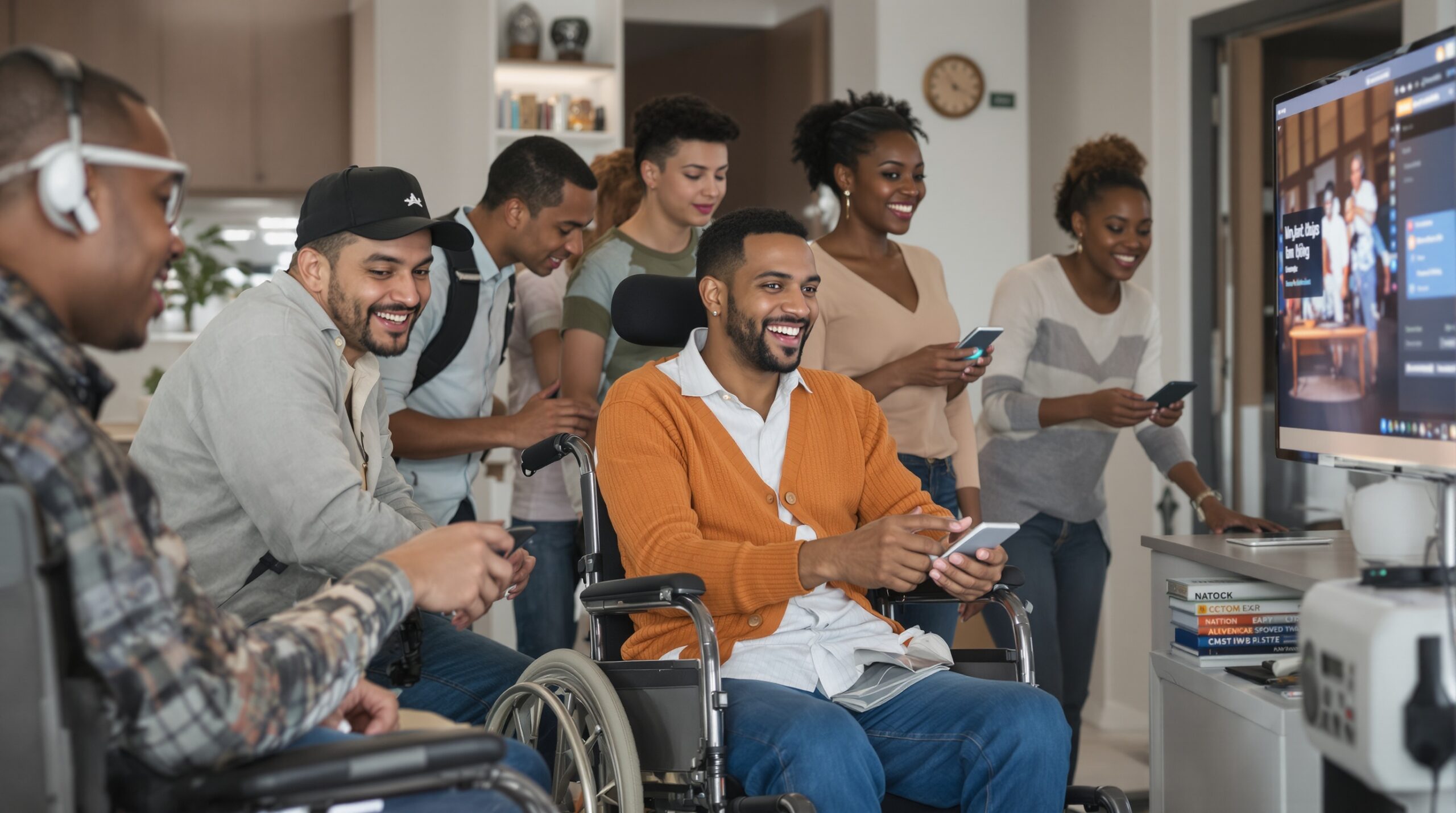Artificial Intelligence (AI) is revolutionizing accessibility for people with disabilities. New AI-powered solutions are changing the way individuals with various challenges access the world. From communication enhancements to mobility improvements, AI-driven technology offers practical support. This support helps level the playing field for millions worldwide.
AI-Powered Communication Tools
Communication barriers often present significant obstacles for people who are deaf, hard of hearing, or with speech impairments. AI-driven speech recognition and natural language processing technologies now provide real-time transcription services. Applications like Google Live Transcribe and Ava convert spoken words into text almost instantly. This innovation allows users to participate more fully in conversations and meetings.
Text-to-speech and speech-to-text tools also benefit people with limited vision or literacy challenges. AI learns to interpret diverse accents, dialects, and speech patterns, making these tools more accurate and inclusive. Voice assistants such as Siri and Alexa can now understand users with speech difficulties much better than before. This fosters independence and creates a more inclusive environment for communication.
Improving Mobility and Navigation
Navigation in public spaces remains a challenge for people with visual or mobility impairments. AI-powered navigation apps are changing this experience. For instance, Microsoft’s Soundscape uses 3D audio cues and AI mapping to guide visually impaired users. The app provides information on nearby landmarks or street crossings, increasing safety and autonomy.
AI also powers autonomous vehicles and robotic assistants, expanding new mobility options. Smart wheelchairs equipped with AI navigation help users avoid obstacles and reach their destinations safely. These advances reduce reliance on human assistance in daily life. Overall, mobility becomes less of a barrier and more of a pathway to independence.
Accessible Digital Content Through AI
Much of today’s world is online, but digital content is not always accessible by default. AI bridges this digital divide by generating automated captions, transcripts, and image descriptions. YouTube and Zoom, for example, use AI to provide closed captions on videos and live calls. This allows people who are deaf or hard of hearing to understand video content.
AI-driven image recognition tools, like those used by Facebook and Instagram, generate alt-text descriptions for photos and graphics. Individuals with limited vision can now understand visual content through screen readers. These automated solutions help content creators ensure their websites and social media posts reach a broader audience.
Enhancing Education Accessibility
Education can be particularly challenging for students with disabilities. AI is beginning to address many of these barriers. Adaptive learning platforms use algorithms to customize instruction based on each student’s abilities and needs. Students with learning disabilities, such as dyslexia or ADHD, benefit from tailored exercises and pacing.
Speech recognition tools help students with writing challenges convert spoken words into essays and homework assignments. AI-powered language models provide grammar correction and writing suggestions tailored for accessibility. Reading materials become more accessible using AI to convert text to audio or provide summaries in simpler language.
Personalized Assistance and Daily Living
Personal digital assistants enhanced by AI simplify daily life. These assistants help schedule appointments, set reminders, and control smart home devices. Users with mobility or memory impairments gain more control over their environment.
AI-enabled home automation, such as smart thermostats or lighting systems, responds to voice commands or routines. These tools also help those with cognitive disabilities live more independently. AI-driven grocery-list apps help users remember key items by scanning cupboards and suggesting needed products. All these tools combine to reduce daily barriers and foster self-reliance.
Expanding Employment Opportunities
Employment presents unique challenges for individuals with disabilities. AI solutions open new paths for job seekers and workers alike. Automated resume readers convert various document formats into accessible text, making the application process easier. AI chatbots provide real-time support for employees who have questions or need workplace accommodations.
Workplace communication tools powered by AI, like real-time captioning, ensure meetings are accessible to everyone. AI-generated summaries help employees with cognitive disabilities follow conversations better. Each innovation creates a more inclusive and supportive workplace, breaking down barriers to equality.
Overcoming Limitations and Ensuring Inclusion
AI tools open possibilities, but some challenges remain. Bias in training data can reduce effectiveness for diverse users. Developers are actively working to ensure AI learns from broad and representative data sets. Accessibility advocates also stress the importance of including people with disabilities in AI design and testing.
Transparency and user feedback help improve systems over time. Legislators and organizations worldwide are beginning to introduce standards for digital accessibility. These standards urge companies to consider inclusion from the start of product development. Only by listening to user experiences can AI reach its full potential as an accessibility tool.
The Future of AI and Accessibility
The potential of AI to improve accessibility is enormous. Ongoing advances in computer vision, natural language processing, and robotics promise even greater inclusivity ahead. Developers are working on predictive AI models to anticipate needs and provide assistance before challenges occur.
Collaboration between technology firms, advocacy groups, and users remains key to these improvements. As AI systems become smarter, so too will the ways they empower people with disabilities. The aim is full participation and equal opportunity.
Conclusion
AI-driven innovation is transforming accessibility for millions of people globally. New tools address challenges in communication, mobility, education, employment, and daily life. As technology evolves, the gap between those with and without disabilities grows smaller. By centering accessibility in design, AI offers a future where everyone can participate fully and independently.


